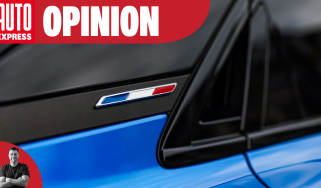Are you ready for self-driving cars? Inside the autonomous car revolution
We could soon see driverless cars on UK roads – we investigate whether we’re ready or not
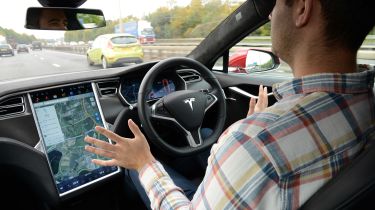
‘Artificial intelligence’ and ‘driverless cars’ – terms with the power to make people excited or uncomfortable in equal measures. Both go hand-in-hand, with AI powering the most advanced self-driving vehicle systems, using machine learning to help overcome tricky situations and manoeuvres on the road.
Yet, while autonomous car technology has long been the stuff of science fiction and/or very limited trials in controlled conditions, the reality of driverless cars populating our roads in the UK could now be right on the horizon.
That’s thanks to a raft of new legislation that will, from spring 2026, enable a handful of autonomous taxi firms to begin offering limited driverless rides to paying customers. The likes of Uber and Waymo, which both operate services abroad (mainly in the US), have all announced plans to enter the UK market, specifically London, as part of this phased introduction.
Tesla also released videos showing a Model 3 driving unassisted around a number of cities, Including London and Paris. The US brand hopes to offer its Full Self-Driving system (FSD) system in the future, when legislation catches up with the technology. FSD uses AI to help the car find its way out of an unmapped car park, for example, but is yet to be given the green light for public use in the UK.
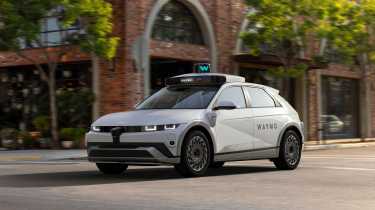
What is the Automated Vehicles Act?
Before we get ahead of ourselves, though, it’s important to explain the laws enabling this autonomous revolution. The Automated Vehicles Act 2024 was actually introduced under the previous Rishi Sunak Conservative government and allows pre-designated ‘authorised self-driving entities’ (ASDE) to legally operate self-driving taxi services on the road.
Most importantly, however, it answers the crucial issue of where liability lies in the case of an accident or committing an offence. Currently, semi-autonomous technology mainly places the responsibility at the hands of the driver behind the wheel. The AV Act defines this as a ‘user-in-charge’, with such a person occasionally being prompted by the system to take over control.
However, in the case of non-user-in-charge vehicles and/or journeys, the liability instead lies with the aforementioned ASDE which owns and operates the vehicle. The operator is also charged with maintaining the vehicle, as well as responding to incidents such as breakdowns.
While the Automated Vehicles Act reached Royal Assent in 2024, it’s yet to be fully introduced; the Department for Transport says it will become law towards the second half of 2027. As mentioned earlier, however, small-scale pilots of driverless taxi and bus services will be permitted from the spring of 2026.
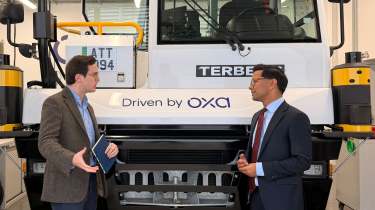
Are we ready for driverless cars?
So, with the legislative framework in place and firms publicly announcing their intentions to offer autonomous taxi services in the UK, are we really ready for driverless vehicles on our roads?
Well, the two main problems come down to cost and accountability. Labour AI Minister, Kanishka Narayan, explained how autonomous vehicles are “part of the toolkit that will help drive the cost of transport down, especially for people in rural areas”.
However, at this moment in time, autonomous vehicles are rather expensive; Waymo’s fleet of Jaguar I-Paces, for example, are estimated to cost well over £100,000 per unit. This cost is currently passed onto the consumer, meaning that the price of a ride in a self-driving vehicle is typically higher (some sources say 20 to 40 per cent more) than a taxi driven by a human driver.
In the future, economies of scale and a race to the bottom in terms of competition should, in theory, bring this cost down. Nevertheless, if you acknowledge the current cost implications and put the novelty of being driven around in an autonomous car to one side, firms like the Oxfordshire-based Oxa have begun to realise that the main market for autonomous vehicles, at least for now, is not in the mobility sector, but instead the area of industrial and logistics.
In closed, controlled and easily mapped environments such as airports and ports, autonomous vehicles are able to boost efficiency by operating all hours of the day without the need for breaks or driver changes. Standard work vehicles are retrofitted with the necessary tech and are monitored remotely by staff, only being manually controlled as and when a problem arises. This around-the-clock style of operation makes automation a lucrative opportunity, despite the little-to-no reduction in staff and significant up-front cost.
Oxa began its autonomous vehicle journey with the on-road market – it claims to have transported over 10,000 passengers in modified, driverless Ford Transits minibuses. Yet, speaking to Auto Express, Oxa’s founder, Paul Newman remarked: “when it comes to [automated] passenger cars, the market isn’t quite what it’s cracked up to be. It will be eventually, but just not yet.”
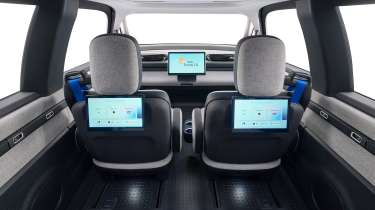
How do autonomous cars work?
There’s also the aspect of safety and accountability. For example, Tesla’s Robotaxi service uses what’s known as an ‘end-to-end’ AI system. This operates by funnelling a live camera feed into single machine learning, which is designed to react in the same way that an experienced driver would. It’s also a lot cheaper on a unit-by-unit basis than the Waymo’s choice of hardware, given the comparatively few sensors needed for it to operate.
The problem is that with machine learning, there is always the possibility of a mistake being made. So-called “edge cases” (rare, unpredictable scenarios) where the automated systems are caught out can happen, which wouldn't necessarily be the case if there was some kind of hardware failsafe (such as a LiDAR scanner) to detect a hazard and trigger an intervention.
Due to their sheer complexity, end-to-end AI models also tend to be rather opaque when it comes to retrospectively deciphering what went wrong, leading to a lack of accountability and difficulty in learning from errors. Oxa and Waymo, despite being in separate areas of the AV industry, both utilise a much more transparent composite AI approach.
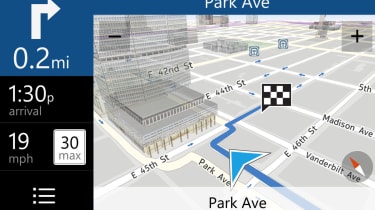
How does this work? Well, as Newman explained: “Imagine you’re a rally driver with an amazing co-pilot and they say ‘take a hard left’. However, as a driver you’re always going to check yourself. The same goes for [compound AI] – you’ve got suggestions coming in from lots of different sources, such as sensors, LiDAR and GPS. Then on top of that it’s got a memory of what the world should look like and what it’s seeing. All of this introspection is designed to give confidence.”
Of course, this technology isn’t entirely infallible; while Waymo did recently share a document outlining and highlighting the details of its safety framework, even this list of detailed instructions hasn’t saved the company from being investigated by the U.S. National Highway Traffic Safety Administration after reports Waymo vehicles failed to follow traffic laws around school buses.
That’s not mentioning Tesla, which is also facing questioning by the NHTSA as social media footage has shown Robotaxis displaying erratic behaviour including speeding, stopping suddenly and even swerving into oncoming traffic. This only highlights how even the mighty Tesla and the Google-backed Waymo are still susceptible to trip-ups; this type of technology is still relatively in its infancy and while mistakes are somewhat to be expected, one rare anomaly can still result in disastrous consequences if it occurs on the public road.
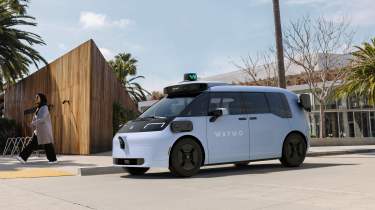
What next for self-driving cars?
For those a little worried about what the future might hold, Narayan reassures us that government guidelines insist that autonomous driving systems used in the UK must achieve “a level of safety at least as high as careful and competent human drivers”. Although, this is perhaps not all that high of a bar considering how, in almost the same breath, he also pointed out how “88 per cent of road collisions are down to human error”.
With this in mind, more legislation will be needed in due course to establish what an acceptable level of safety is. UK roads are notoriously tighter and more complicated than those across the pond, meaning firms will need to ensure their software is suitably robust in order to cope.
Then there’s also the issue of data sharing, as many consider the act of relinquishing certain information such as personal movements to a large corporation to be a huge security threat. Throw in the problems of insurance or autonomous vehicle driving tests (which are both just tips of some rather hefty icebergs) and you’ll realise just how much there is to consider.
Ultimately, self-driving vehicles could present a fantastic opportunity when it comes to greater safety and efficiency; Labour claims the expansion of the autonomous vehicle industry – both on-and-off-road – could also see the creation of 38,000 new jobs across the country and be worth up to £42 billion by 2035.
However, as the technology continues to progress at a rapid pace, it will be critical to not to rush the process of developing legislation and ensuring operators are held to account, lest autonomous vehicles become somewhat of a potentially dangerous runaway train.
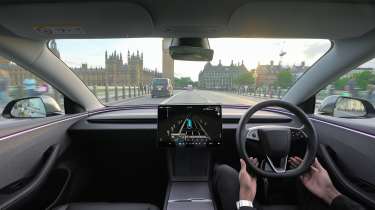
What is a driverless car?
The question of what is a driverless vehicle may seem like a stupid one, but the answer is actually not quite as straightforward as it seems. Given the definition changes depending on a vehicle’s full capabilities, self-driving technology has been split into five distinct levels.
- Level 1 technology has been around for decades and include things like adaptive cruise control and lane-keep assist – these features work independently of one another and still demand the driver remains mostly in control.
- Level 2 comprises most of the ADAS (Advanced Driver Assistance Systems) we see fitted to vehicles today. Such technology enables the car to take full control of the steering and speed, but still requires human intervention if the vehicle is to make any deviation from the current path. Tesla very recently got into trouble with US courts for describing its Level 2 Autopilot software as ‘full-self driving’, despite the system heavily leaning on human intervention.
- Level 3 tech can make choices for itself – such as change lanes to overtake or reroute entirely – but again requires the driver’s full attention, meaning it’s not technically a full self-driving system.
- Level 4 is the peak of commercially available driverless technology at the moment, while it does occasionally require inputs from a driver/controller, can generally drive itself without intervention in a pre-mapped zone. Tesla, for example, places staff in the front seats of its Model Y Robotaxis who can take over when necessary, while Waymo utilises remote navigators who can redirect the vehicle manually from afar.
- Level 5 autonomous driving is the end goal which, at least in a commercial state, does not exist yet. This doesn’t require any human input at all and will, in theory, be able to make its own judgements and ethical decisions – even in the trickiest and most demanding of situations.
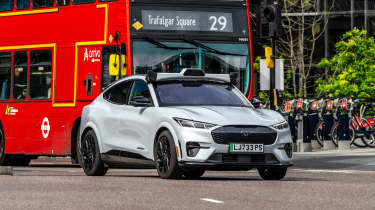
What will driverless cars mean for the way we drive on UK roads?
A future where cars pilot themselves and humans tag along for the ride will bring huge changes to the way we drive and live our lives.
Insurance
Initially it was thought that insurers would extend compulsory motoring insurance to cover product liability, to protect motorists if the software in their autonomous vehicle malfunctions when they’re not in control. But the new laws mean this may not be necessary.
Some manufacturers, such as Volvo, have suggested that they will provide their own form of insurance for self-driving vehicles.
Specialist insurance broker Adrian Flux announced it will launch a unique policy, to protect drivers of autonomous vehicles from hacking or software failure, in systems such as self-parking or adaptive cruise control. In any case, the Government and motoring industry wants it to be easy for drivers to make a claim, rather than allowing insurance firms to shift the blame.
Driving licences
The Government makes a clear distinction between highly automated vehicles and fully automated vehicles. In the case of the former, existing licence laws will remain as a driver must be ready to assume control of the vehicle at all times. However, the latter may require changes in legislation, as fully self-driving cars may appeal to drivers who can’t or don’t wish to drive conventional cars.
A report by the House of Lords Science and Technology Committee concluded that drivers with existing licences should take a second driving exam in an autonomous car to make sure they're capable of taking back control if needed.
The research showed that drivers of automated vehicles took on average six times longer to respond to emergency braking situations compared with those in non-autonomous cars. The report concluded that drivers of autonomous cars risk becoming "complacent” and trusting the technology too much.
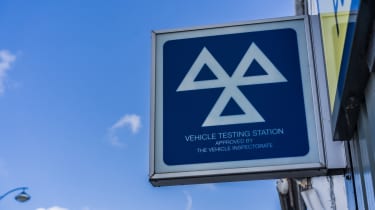
Roadworthiness and maintenance
European and UK roadworthiness standards will need to be revised for driverless car production, including a new category for both the annual MOT test that ensures the performance of autonomous driving systems can be tested cheaply and easily.
Vehicles which can be driven both manually and autonomously could well form a tricky legal minefield. For example, if the vehicle’s manual controls function perfectly, but its autonomous systems are malfunctioning, could it still be deemed roadworthy and pass an MOT?
The Highway Code
Autonomous vehicles can drive more accurately than humans, so the Highway Code will need to change to account for this. Autonomous vehicles could be programmed to overtake cyclists at a closer distance, for example.
Tailgating may also no longer be an offence – running several automated vehicles close together brings efficiency benefits, with the leading vehicle’s aerodynamic wash reducing the drag on the vehicles behind it.
Road infrastructure
The effectiveness of autonomous technology can vary according to its surroundings. An autonomous vehicle can have all the radar, camera and laser-based guidance available to help it “see'' its environment, but the number of variables in more complex driving situations requires huge amounts of processing power to make sense of the information.
The usefulness of driverless cars may ultimately depend on the quality of the road infrastructure and its ability to standardise the driving environment. Connected car technology where cars themselves and road infrastructure communicate to ease traffic flow and warn of problems will help in the future.
Current quality standards for the UK’s road infrastructure vary widely depending on where you drive. A brand-new dual carriageway will be perfectly laid out, with defined white lines and clear signage but, over time, the quality of the road markings and clarity of the signage will deteriorate, making it more difficult for autonomous vehicles to operate correctly.
Narrow lanes in rural areas could pose a different challenge for autonomous vehicles. If there are no white lines defining the edge of the road, will the vehicle be able to “see” where the tarmac ends? What happens if the autonomous vehicle meets an oncoming vehicle? Will it be able to locate a passing place?
In the UK, many country lanes are covered by a 60mph national speed limit. Would an autonomous vehicle attempt to constantly attain this speed, regardless of the road’s twistiness and width? All of these scenarios will need to be trialled before full autonomy can be expected to work as effectively as a driver at the wheel.

Drivers with limited mobility
One of the biggest benefits that autonomous cars will offer is mobility to those who currently cannot drive. A study by the Society of Motor Manufacturers and Traders (SMMT) found that six out of ten people with limited mobility would benefit from an autonomous car.
Of those who agreed their lives would be improved, almost half said they would be able to pursue hobbies outside their home or go out to places like restaurants more often. A further 39 percent said an autonomous vehicle would provide them with better access to healthcare services.
Driving standards
Autonomous vehicles are designed to reduce the number of accidents caused by human drivers but we’ve seen from trials in the US that they’re far from faultless. There have been several documented cases of accidents involving autonomous vehicles and overly complacent drivers, leading to a growing concern that an over-reliance on autonomous technology will negatively impact drivers’ ability behind the wheel over time.
Did you know you can sell your car with Auto Express? Get the highest bid from our network of over 5,500 dealers and we'll do the rest. Click here to try Auto Express Sell My Car now...
Find a car with the experts



